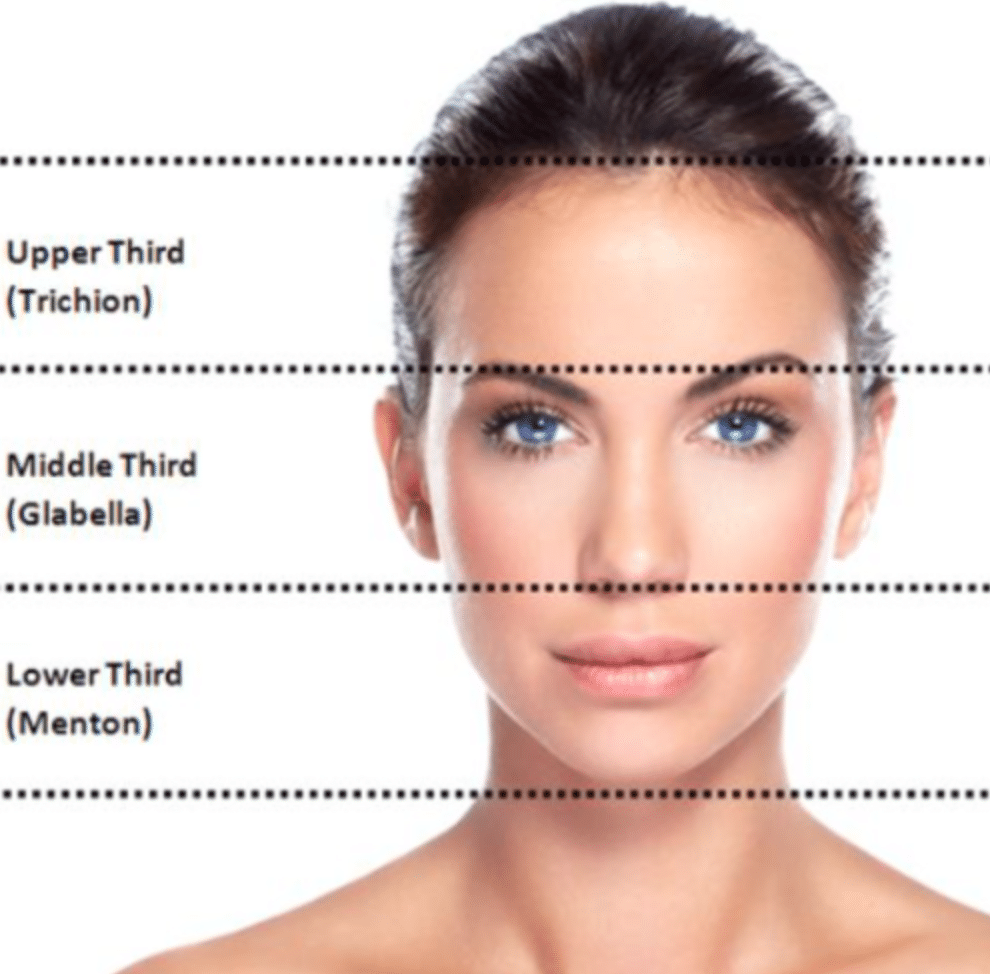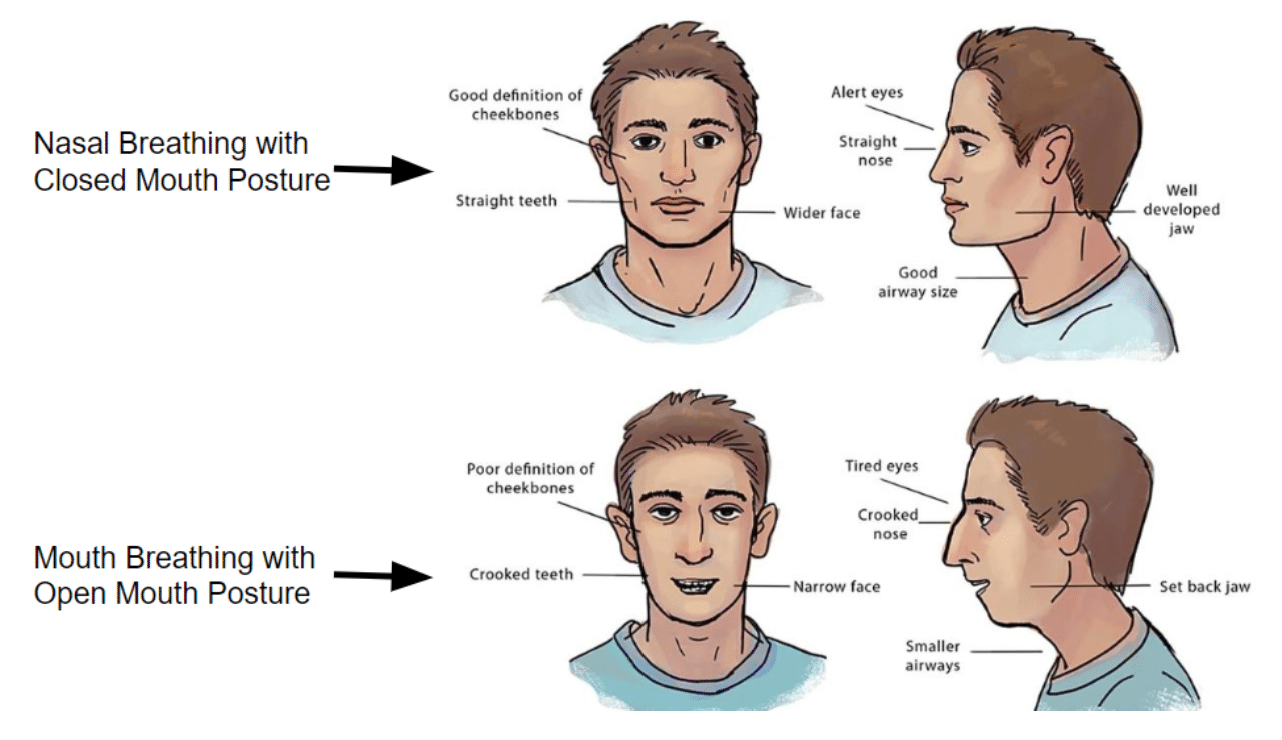Good Oral Posture Exercises. GOPex. The secret sauce for proper balanced growth and development of the lower face… for maintaining a consistent closed mouth posture with nasal breathing throughout sleep… for growth of the jaws to sufficient size and shape to contain all 32 teeth in good alignment.
It’s simple. Form follows function. Balanced muscle force, both passive at rest and active during function, guides balanced and optimal growth. Any degree of imbalance results in suboptimal growth.
Balanced resting oral posture:
- Teeth lightly touching
- Lips together
- Tongue fully resting in the palate
- Nasal breathing
Balanced swallow function:
- Teeth together and lips closed
- Tongue pushes against palate
- Tongue not pushing against teeth
- NO movement of facial muscles
Read on below for details, but I’ll first get right to the important principles and exercises that I need for my patients to understand and dominate.
GOPex was developed by two of my favorite mentors and colleagues, Dr. Simon Wong out of Australia and Dr. Sandra Kahn from California, to truly address and correct the root cause of poor craniofacial development. It is essential to understand the principles of GOPex in order to implement the exercises for their greatest benefit.
I encourage you to watch the entire GOPex Playlist on Dr. Simon Wong’s YouTube channel. Below are selected videos that I find critical to success.
GOPex Principles
Dr. Wong… on What is GOPex- the incorporation of proper posture into daily activities like eating and speaking… on the Orthotropic Principles that aid in understanding why GOPex is so effective to achieve proper craniofacial growth…on the Focus of GOPex which utilizes proper posture and function to stimulate proper growth… and on the Cornerstones of GOPex.
More Videos:
GOPex Exercises
These are the GOPex exercises that my patients must master in order to achieve and maintain oral and facial balance. Note that GOPex goes beyond just the mouth. During these exercises, be sure to have good body posture: sitting straight up, upright shoulders, head over shoulders.
Exercises must be done a minimum of 30 consecutive days to form a habit. If you miss a day, start over at 1. Once the balanced oral posture becomes a true habit, you or your child will consistently rest with the mouth closed throughout the day and throughout sleep at night. If the mouth or lips are still coming open subconsciously during the day (like while watching tv or while on the listening end of a conversation) or at night when sleeping, then proper posture is not yet habitual and consistent daily exercises must be continued.
More Videos:
The checklist to know when good oral posture has become habitual:
☑️ The mouth/lips never open when watching tv or reading
☑️ The mouth/lips never open when on the listening end of a conversation
☑️ The mouth/lips never open when sleeping
☑️ The mouth/lips never open when chewing and swallowing
☑️ The face does not move when swallowing
If the mouth falls open during any of the above times, this is the primary indication that good oral posture is not yet or is no longer habitual. Continue or resume daily exercises. The most common life event that allows bad habits to return is a period of mouth breathing due to sickness, allergies, or congestion. Good habits must be promptly retrained after this.
Why Good Oral Posture is Important

Facial beauty, Airway health, and TMJ health are correlated and are all very dependent on proper forward growth of the jaws and lower face. The take-home message here is that health, beauty, and function are all reliant on proper balanced oral posture and function throughout childhood and adolescence.

I’ll put this here again because it is so very important:
Balanced resting oral posture:
- Teeth lightly touching
- Lips together
- Tongue fully resting in the palate
- Nasal breathing
Balanced swallow function:
- Teeth together and lips closed
- Tongue pushes against palate
- Tongue not pushing against teeth
- NO movement of facial muscles
Oral resting imbalance includes any combination of open mouth, open lips, low tongue, and mouth breathing at rest. Oral function imbalance (dysfunctional swallow) indications include any of the following: facial muscle movement, open mouth or lips, gasping for air, noise with the swallow.
I want to assure everyone’s understanding of the “imbalance”. When the mouth is open, the cheeks passively push inward on the jaws underneath them and the tongue is not resting up in the palate to counter these inward forces. The result is that the jaws collapse inward rather than growing outward. A swallow requires seal and suction to propel the food bolus or liquid back down the hatch. In a balanced swallow, the seal is made strictly with the tongue on the palate. An imbalanced swallow involves the tongue pushing out against the teeth with compensation of external facial muscles to suck or push in to make a seal.
Consequences of oral resting and functional imbalances can take multiple forms in the face. The most common presentations are a long and narrow face, tooth crowding and misalignment, weak jawline, “hump” on the nose, poor definition of the cheekbones with increased show of the inferior whites of the eyes (sclera), and/or a convex facial profile with recessed jaws.
As a lighter aside, Zoolander’s signature “Blue Steel” is a male model’s way to camouflage poor growth of the lower face. Sucking in the cheeks gives the appearance of a more defined jaw line. Pursing the lips forward gives the illusion of the lip support that would be present with more forward growth of the jaws.

The deficient growth of the lower face goes far beyond aesthetics. When the maxilla is narrow and set back, the nasal airway above it and the pharyngeal airway behind it are narrow and restrictive to airflow. When the mandible grows downward rather than forward and is trapped behind a deficient upper jaw, the temporomandibular joints (TMJ) are more at risk of compression and the airway is at more risk of restriction due to the recessed position of the posterior tongue. The correlation of TMJ and airway restriction is a primary reason to prevent poor jaw growth.
Deficient jaw growth is a relatively new phenomenon in the scope of the human race. Our ancestors, living traditional lifestyles and eating their traditional diets, consistently had wide developed jaws with alignment of all 32 teeth (this includes wisdom teeth). Industrialization of the food system and modern lifestyle has been the change that brought with it the poor jaw development. The work of Dr. Weston A. Price in the early 1900’s demonstrates this change well. In every traditional society that he observed, he consistently found perfect jaw development and tooth alignment. As early as the first generation into trade with the western world, thus the introduction of nutrient poor industrialized food (and coordinated poor immune health, congestion, and mouth breathing), drastic changes were seen in oral health and craniofacial development. This first generation saw a rampant increase in decay and the onset of insufficient development of the lower face with crowded teeth and poor alignment.

Watch the movie Open Wide to learn more. As I write this, it can be found on Netflix. Some of my brilliant international colleagues and mentors, along with the founder of Orthotropics- Dr. John Mew, are featured in this film. They discuss facial growth and orthodontic treatment that is focused on the whole craniofacial complex to treat the root cause of deficient jaw growth in order to address the symptom of crooked and crowded teeth.
At What Age Do We Focus on Good Oral Posture?
All ages!!
Immediately in infancy, it is important to reinforce closed mouth posture with tongue to palate.
One of Dr. Weston A Price’s observations of traditional Native American cultures that has always stuck with me is that a mother would lightly pinch her infant’s lips closed for a prolonged period following breast feeding. These traditional cultures instinctively understood the importance of nasal breathing with a closed mouth. They may not have known the details of the innate immunity and of the preparation for the lungs that is provided by air passage through the nose to filter out pathogens, to warm and humidify, and to incorporate nitric oxide into the inhaled air. They certainly weren’t trained in the mechanism of growth that occurs with oral balance vs oral imbalance. This inherent health was consistently present in traditional cultures, and was not lost until “modern lifestyle” was introduced through trade and colonization. Let’s get ourselves back to factory settings and rest with our mouths closed and breathe through our nose.
Ideally, age 6 to 7 is a hard goal to set for correction of oral balance. The most notable and most irreversible growth pattern of an open mouth during childhood is excess vertical growth of the lower two-thirds of the face. Very few kids experience excess vertical growth prior to 6 years of age, during the primary dentition (baby teeth). The risk for vertical facial growth peaks at age 6 to 7, when the child enters the mixed dentition with the beginning of eruption of the permanent dentition. Open mouth resting oral posture must be corrected by this age or some degree of vertical growth of the lower face is inevitable. Even if you’ve missed this window- correction of poor posture at ANY time will only help the situation and help to prevent growth from falling further off the tracks.
Again… ALL ages are the right age to correct any oral imbalances. Good oral posture is always in style 😉 Remember: Form follows function. Even when active growth has slowed in adolescence or is complete in adulthood, imbalanced passive forces of an open mouth can still result in undesirable changes in the dental arches and the face, in constriction of the nasal and pharyngeal airways, and in compression of the jaw joints (TMJ).
Close your mouth, breathe through your nose, and live your best life!
✌️
~Dr. Mindy


